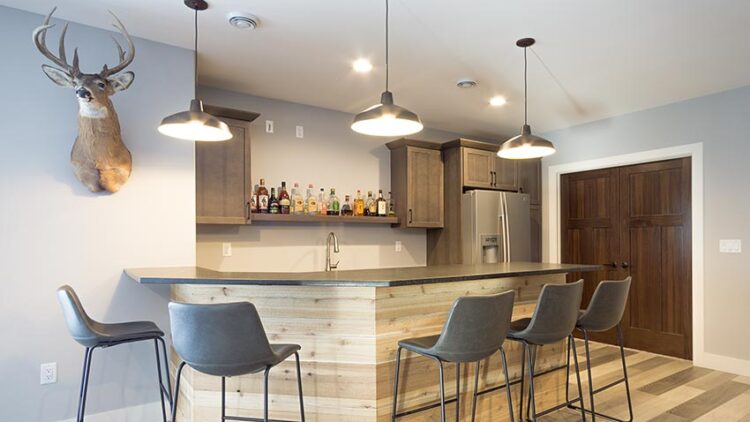What to look for before planning a basement remodel
Basement remodels are hot right now. Not only can one add more to your living space, a basement remodel can increase the value of your home by expanding the livable square footage of your house without building an addition.
But basement remodels can be tricky. And basements don’t always behave in the way the floor or floors above them do. So, let’s take a high-level view before you explore what can be done below.
Moisture Check
First and foremost, you’ll want to check for moisture or water issues before you even consider a remodel or begin planning. Are their pools of water, drips or wall “sweat” during periods of rain, high humidity or snow melt? Look for any cracks in the walls. And inspect the landscaping around your house to make sure it grades away from the foundation. You’ll need to fix any issues your inspection uncovers (fill wall cracks, grade landscaping, etc.).
Radon Gas
In addition to moisture issues, check your basement for radon (this should be done regardless of remodeling your basement). Radon is a radioactive gas that’s invisible, odorless, tasteless and naturally rises from soil and rock beneath your house.
Dangerous levels cause or exacerbate respiratory illnesses (including lung cancer). And it can be found in any home new or old. Even if your neighbor is radon free your home can still be at risk. Fortunately, you can check for radon yourself by purchasing a radon test kit and mailing it in for the results, or have a professional do it. If your results show high gas levels, you should immediately install a radon mitigation system or contact a contractor who can install one for you.
Codes you need to know
So, you fixed the issues you found. Or discovered that basement moisture and radon issues are no issue for you. Terrific. Now you can start to think about the possibilities, right? Well, mostly.
If you’re going to handle the remodel yourself, you’ll need to check with your municipality’s codes and whether you have to pull permits (which is more than likely going to be the case), especially for any plumbing or electrical which will probably require inspection. If you’re working with a contractor, they will more than likely handle this aspect for you.
Quick tips
Height matters:
Ceiling height in basements vary from house to house. Older homes tend to have lower ceiling height. Which can pose some challenges if looking to install a ceiling treatment (like a drop ceiling) with lighting or ceiling fans. General code for ceiling fans is a 7-foot minimum clearance from floor to fan blade. For lighting, consider recessed fixtures. Not only do they save valuable overhead space, but they’re easy to install with a drop ceiling.
To bedroom or not to bedroom:
The addition of another bedroom will definitely add value to your home. But a basement bedroom comes with additional codes. Specifically, egress. In the U.S., a basement bedroom requires two ways to get out. Usually that means a window that’s big enough for a person to escape in addition to a bedroom door. And since not many basements are built with an egress window, if you do not have one you will need install or have one installed. Which means additional work on your foundation.
Once you know your basement’s limitations and opportunities and the codes for electrical, plumbing, HVAC (heating and cooling) and egress, then you’re in the position to start planning. To learn more from the materials, products and insightful advice on the unique nature of remodeling a basement, stop into your local Chase Lumber and speak to one of our experts. Or have your contractor talk to us. We have what you need to get on top of your basement remodel.

